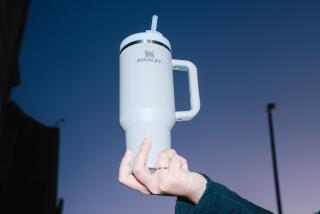The classic tulip glass is the only beer glass you need. Here’s why
There’s more to the beer glasses than the ubiquitous American shaker pint glass. From the tall and flared German hefeweizen glasses to the diminutive snifters best for holding potent barrel-aged treats, it seems like there’s a particular glass for every style of beer. But you don’t have to collect a cabinet full to best enjoy craft beer; if you only have one glass, make it a classic tulip.
Beer nerds (a term of endearment ‘round these parts) are quick to geek-out over “proper” glassware for particular beer styles, and some of the best beer bars in the city take their glassware selection very seriously. Beachwood BBQ is known for stocking more than a dozen different styles of glass (it’s one of the only places in town where you’ll have a Scotch ale served in a thistle glass). But how much difference does the glass actually make?
The shape and size of style-specific glasses does provide specific effects. A pilsner glass is tall and thin to best display the style’s clarity and sparkling golden color, while the flare at the top of the over-sized weizen glass supports the voluminous, fluffy head that the wheat beers are prized for. A snifter turns inward at the rim to hold in aromas produced as the beer slowly warms in the hand, and there is even a feature-packed specialty IPA glass developed by glassmakers at Spiegelau and the brewers at Dogfish Head and Sierra Nevada to emphasize IPA’s defining qualities.
The tulip glass, with its inward turn and flared rim, is perhaps the most versatile, and in addition to the Belgian ales it was designed for, it makes a great vessel for everything from IPAs to stouts. The flare supports a healthy head, while the narrow waist helps hold in aromas. The stem and foot make for an easy grip and facilitate swirling to release more aromas.
An example that holds about 16-20 ounces is the sweet spot for capacity, and they have become easy to find from breweries, famous glassware brands, and there are plenty of inexpensive options available.
As for the shaker pint -- the glass started as half of a cocktail shaker -- it became so popular with bars because it is cheap, durable, and stacks easily. It’s perfectly acceptable for insipid light lagers, but not the best way to showcase craft beer’s flavors and aromas.
ALSO:
Italian kids drinking more beer than wine
Robert Parker goes toe-to-toe with his critics
Horreur! French turning to fruit-flavored wines
More to Read
Eat your way across L.A.
Get our weekly Tasting Notes newsletter for reviews, news and more.
You may occasionally receive promotional content from the Los Angeles Times.






